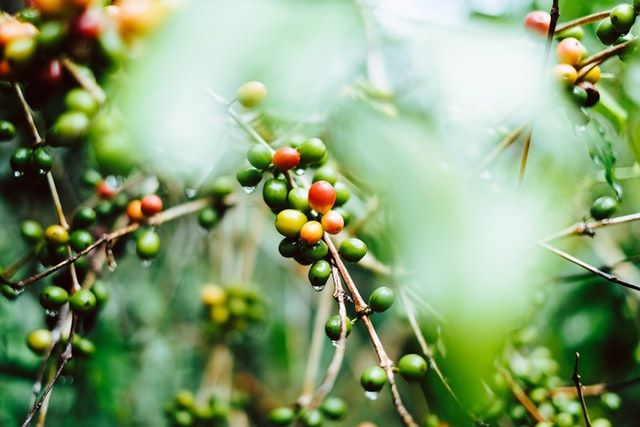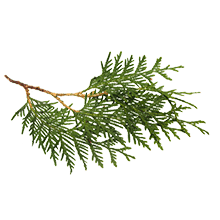
Java Momma sources high quality coffee beans from around the world. They are sold as single origin or mixed to create our signature blends and flavored coffees.
Java Momma Coffee Profiles
India Cherry Robusta
Tasting Notes

Body
Low

Sweetness
Low

Acidity
Low
Flavors

Brewing Suggestions


This Robusta offering is sourced from the Sakleshpu and Coorg districts in Karnataka, India. Coffee is produced on family-owned farms, many of which have been owned by the same family for generations. The region is extremely biologically diverse, with over 5000 species of flowering plants and 500 species of birds.
Coffee Details
Elevation
1200 Meters
Process
Other
Drying
Patio sun dried
Varietals
N/A
Harvest
December
Export
December
Brazil Mogiana Royal Select MWP decaf
Tasting Notes

Body
Average

Sweetness
Average

Acidity
Low
Flavors


Brewing Suggestions


On July 11, 1985 the Cooperativa de Cafeicultores e Agropecuaristas (COCAPEC) was founded. COCAPEC began with almost 300 members in its first year of operations, and today it has grown to over 2,000 members. COCAPEC is renowned in this coffee-growing region for its technical support and natural drying methods. The cooperative’s technical department works in partnership with its members to guarantee consistent coffee quality.
Currently, the high Mogiana region has an average annual production of more than one million bags of coffee, of which 85% is high quality beans produced at an optimal altitude and temperature. Our current offering is Fine Cup (FC) and Strictly Soft (SS), the highest cup category in the Brazilian coffee grading.
Coffee Details
Elevation
800-1200 meters
Process
Decaf
Drying
Mechanical
Varietals
Bourbon, Mundo Novo
Harvest
May
Export
August
Brazil Mogiana Royal scr 17/18
Tasting Notes

Body
Above Average

Sweetness
Average

Acidity
Low
Flavors



Brewing Suggestions


On July 11, 1985 the Cooperativa de Cafeicultores e Agropecuaristas (COCAPEC) was founded. COCAPEC began with almost 300 members in its first year of operations, and today it has grown to over 2,000 members. COCAPEC is renowned in this coffee-growing region for its technical support and natural drying methods. The cooperative’s technical department works in partnership with its members to guarantee consistent coffee quality.
Currently, the high Mogiana region has an average annual production of more than one million bags of coffee, of which 85% is high quality beans produced at an optimal altitude and temperature. Our current offering is Fine Cup (FC) and Strictly Soft (SS), the highest cup category in the Brazilian coffee grading.
Coffee Details
Elevation
800-1200 meters
Process
Natural
Drying
Patio and solar dried machine
Varietals
Bourbon, Mundo Novo Hybrid
Harvest
May
Export
August
Guatemala SHB HHT El Injertal Rainforest Certified
Tasting Notes

Body
Above Average

Sweetness
Average

Acidity
Low
Flavors



Brewing Suggestions


Finca El Injertal was founded in the 1930’s by Jose Olivio Chavez. The farm sits on over 200 acres of land in the northwestern Guatemalan province of Huehuetenango. It is located near several springs that provide water during the dry season as well as theenergy to power the coffee mill. Coffee is produced on 173 acres while 32 acres are a forest preserve where native species oftrees are protected to provide refuge for wildlife.
Certified by the Rainforest Alliance, the plantation is completely covered with shade trees that are an abundant source of organic matter for fertilization and an aid to prevent soil erosion. Today Finca ElInjertal is run by Jose Olivio’s grandson, Jose Alejandro Solis Chavez, and has been producing high quality coffee for three generations.
Coffee Details
Elevation
1185 meters
Process
Fully Washed
Drying
Patio and solar dried machine
Varietals
Caturra, Mundo Novo
Harvest
December
Export
February
Organic Guatemala SHB Chajul Flor De Maiz – Fair Trade (GP)
Tasting Notes

Body
Average

Sweetness
Above Average

Acidity
Average
Flavors




Brewing Suggestions


GUATEMALA FTO CHAJULENSE SHB EP is sourced from family-owned farms organized around the Asociación Chajulense Va’l VaqQuyol (Chajulense). Chajulense has nearly 1300 members and more than 30 years of experience cultivating organic coffee fromthe communities of Chajul, Nebaj y Cotzal, located in the department of El Quiché, Guatemala. This region, called the Ixil, isknown for its rugged terrain and preservation of the indigenous heritage, distinct clothing, and dialects.
Chajulense focuses on supporting indigenous communities recovering from the devastation caused by civil war by empowering economic development through coffee cultivation. Chajulense Members cultivate, harvest and process coffee with micro-mills on farms that average 1acre in size. Chajulense also employees nearly 500 women by remaining committed to the tradition of hand sorting coffee as part of the export preparation.
Coffee Details
Elevation
700 meters
Process
Fully Washed
Drying
Patio and solar dried machine
Varietals
Bourbon, Catuai, Caturra
Harvest
October
Export
February
Organic Bali Blue Moon (Wet hulled)
Tasting Notes

Body
Above Average

Sweetness
Average

Acidity
Low
Flavors




Brewing Suggestions


In Indonesia lies a hidden jewel, the island of Bali. The eruption of the Gunung Agung Volcano in 1963 caused a delay in the progress of modern-day coffee cultivation on Bali. In response to this situation, the government enacted programs to help rejuvenate coffee production. With the distribution of coffee seedlings to local farmers, an island wide coffee growing campaign began.
Today, the coffee growing area in Bali is an estimated 7,500 hectares. Coffee tree varieties include Bourbon and Typica, along with shade trees such as Erythrina, Albizia, Tangerine and Orange. The use of pesticides is prohibited, and all fertilizers are 100% organic.
The Subak Abian is a traditional farming structure organization in Bali, similar to a farmer cooperative. There are 13 different Subak Abians that are currently growing and processing coffee. The promotion of improved coffee growing practices is expected to enhance not only agricultural technology but social and economic standing in Bali as well.
Coffee Details
Elevation
1220-1524 meters
Process
Wet hulled
Drying
Patio and Solar Dried Machine
Varietals
Bourbon, Typica
Harvest
May
Export
July
Burundi A Sogestral Kirimiro – Teka Washing Station (GP)
Tasting Notes

Body
Average

Sweetness
Above Average

Acidity
High
Flavors



Brewing Suggestions


Though the Kirimiro region of Burundi produces a lot of specialty coffee, this lot comes specifically from producers with very new plantations. It’s processed at the TEKA washing station, which is well known in the area for its meticulous processing and Cup of Excellence coffees. The washing station produces about 950 tons of coffee each year and has storage capacity for 80 tons of parchment. Fermentation times for washed coffees vary between 12-18 hours, and drying takes about 8-10 days on raised drying tables in normal conditions.
Coffee Details
Elevation
1932 meters
Process
Fully Washed
Drying
Raised Beds
Varietals
Bourbon
Harvest
June
Export
September
Colombia Excelso E/P
Tasting Notes

Body
Low

Sweetness
Above Average

Acidity
Average
Flavors



Brewing Suggestions

Colombia Excelso comes from small family-owned farms in the Colombian “coffee triangle.” The main harvest is between October and January, and the “mitaca” harvest is between April and June. Small coffee producers pick and process their coffee at their own micro-wet mills and then dry their own coffee, typically on elevated tables inside solar dryers that provide protection from the rain.
Coffee Details
Elevation
1300-1650 meters
Process
Fully Washed
Drying
Not defined
Varietals
Caturra, Colombia, Typica, Castillo
Harvest
October
Export
April
India Monsoon Malabar AA
Tasting Notes

Body
Average

Sweetness
Low

Acidity
Low
Flavors



Brewing Suggestions


The origination of Indian Monsoon Malabar coffee dates back to the era when wooden ships loaded with raw coffee beans would take up to 6 months to travel from India to Europe, sailing around the Cape of Good Hope. During the months that the coffee beans were transported at sea, the humidity and ocean winds combined to cause the coffee to change from its fresh green color to a more aged, pale yellow hue.
Upon their arrival in Europe, the coffee beans were found to have a unique mellowness, soft and smooth tasting throughout the cup, so that the coffee became an instant hit with Europeans, paving the way for the birth of a new coffee type. Today these conditions are replicated in warehouses during the Indian monsoon season so that the coffee beans, exposed to constant humid conditions, undergo the same characteristic changes in size, texture, appearance and in the cup.
Honduras SHG E/P
Tasting Notes

Body
Average

Sweetness
Low

Acidity
Low
Flavors


Brewing Suggestions


The country of Honduras is a suitable location for coffee harvesting. The soil, climate, and conditions in Honduras are the same as neighboring countries. There is a range of coffee quality from Honduras; the country can produce a lower-cost Central American blender coffee, to high-grown specialty lots that rival more popular Central American coffees. This particular type is more complex than its HG counterpart; thus making it a specialty coffee.
- SHG (Strictly High Grown) specifies that the coffee was grown at an altitude around 1350 meters. Coffee grown at a higher altitude and lower temperature produces a slower maturing fruit and a denser bean; which creates a more desirable specialty cup; this classification is higher than HG.
- EP (European Preparation) specifies that the raw beans are all hand sorted to remove any defective beans and foreign material.
Coffee Details
Elevation
1350 Meters
Process
Fully Washed
Drying
Not defined
Varietals
Catuaí, Caturra, Pacas, Bourbon
Harvest
December-April
Export
Sumatra Takengon GR1 DP Sara Ate
Tasting Notes

Body
Low

Sweetness
Above Average

Acidity
Average
Flavors



Brewing Suggestions


Sumatra Takengon GR1 DP Sara Ate (RNY# 44342)
The Sara Ate Coop has been producing coffee in the Takengon region from a collective of small farm owners since the late 1990’s. They have over 500 members that comprise the cooperative. A good many of the coffees that we purchase from Sara Ate is organic. We have had some of our best Sumatra deliveries, be them conventional or organic, from them for many years.
Coffee Details
Elevation
1200 meters
Process
Wet Hulled
Drying
Patio and solar dried machine
Varietals
Catimor
Harvest
August
Export
September
Coffee Language
Coffee language can be confusing and, like wine, certain terms have different meanings to how we use them in day to day living. We’ve created a list of all the common words used in this site so that you can get a complete picture of the differences in our coffees.
Aroma: Quite simply, the smell.
Acidity: Often confused with sour or bitter expressions, acidity refers to how lively or tangy the upfront reaction is on your palatte. Acidity is not a dirty word! It is a sensation that is always current in coffee and In the same way a sparkling water activates certain sensations in your mouth, coffee with a high acidity will do the same. Low acidity refers to a mellow or smooth sensation.
Body: This refers to the weight or the thickness the coffee has in your mouth. The range of sensations are from light, thin, average to above average, rich, strong and sometimes syrupy. A good full-bodied coffee in a long black might suddenly wash out completely in a milk based drink because the elements that activate certain areas of your mouth are negated by the milk.
Flavours: Similar to wine, Coffee has its own unique set of flavours that come through. The standard reference is based on how they taste in a black coffee as flavours completely change when adding milk and since there is no standard for which milk is used in coffee, we must only refer to the flavours you can detect in the espresso or black coffees. The flavour descriptions are an overall impression that you get from tasting the coffee. Often there are certain flavours that hit you upfront which then shift into secondary flavours and aftertastes. When we say “Stone Fruits” we don’t mean your coffee is Peach-Flavoured, we simply mean it has hints or overtones of peaches and apricots whilst still tasting like coffee.


